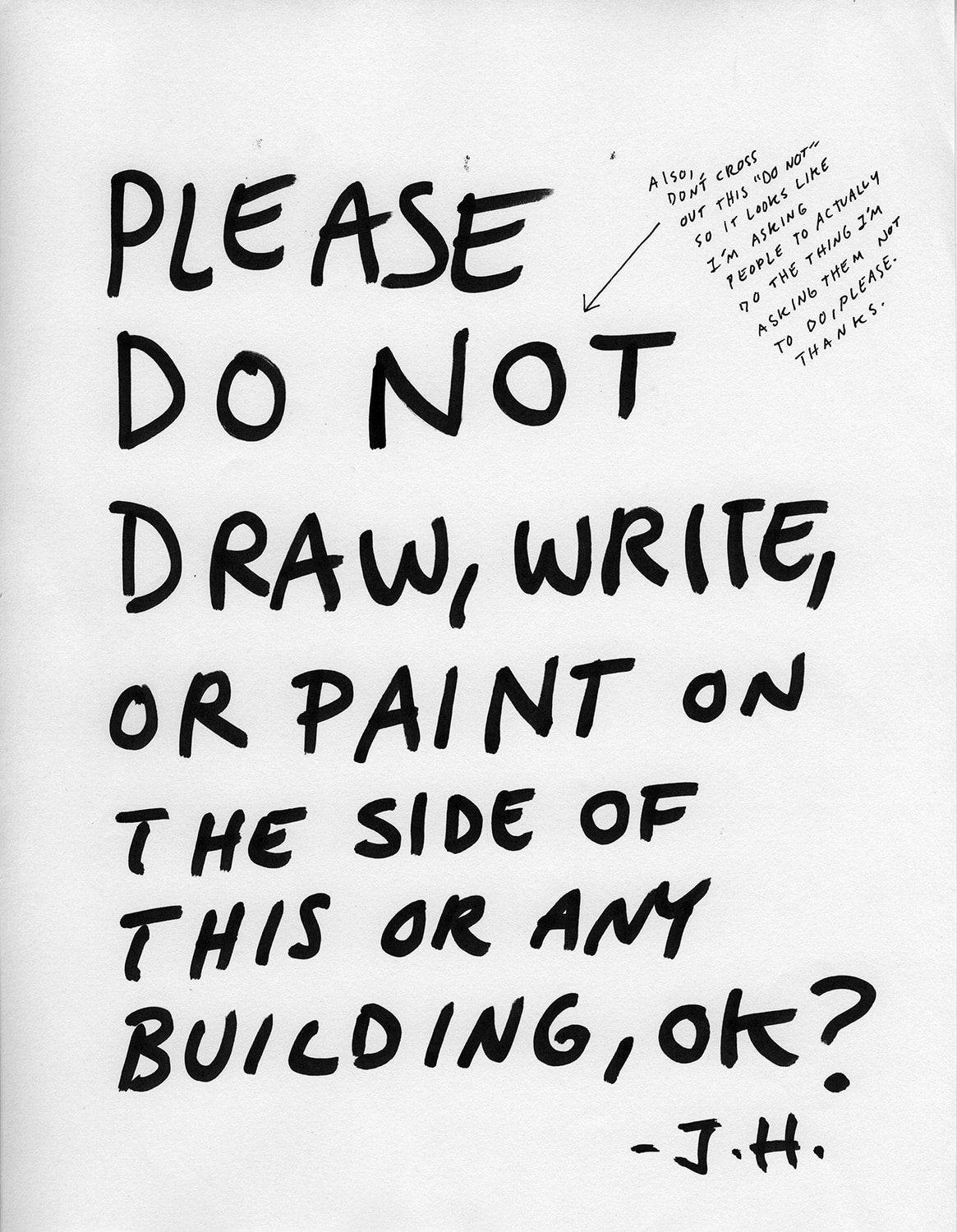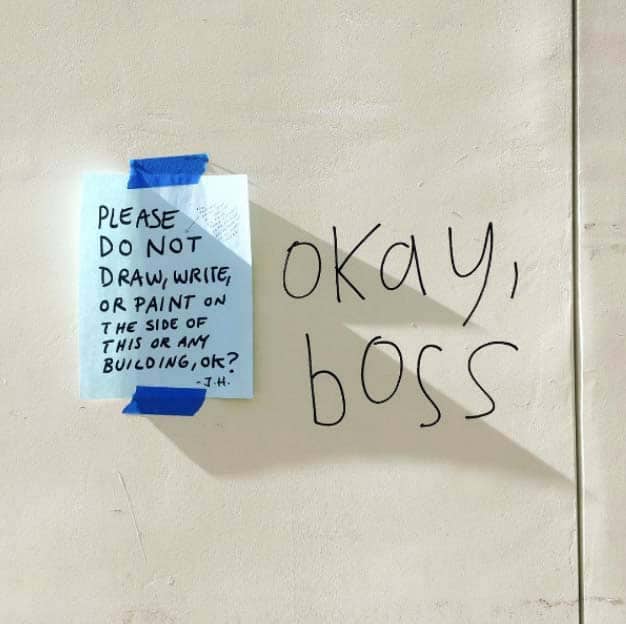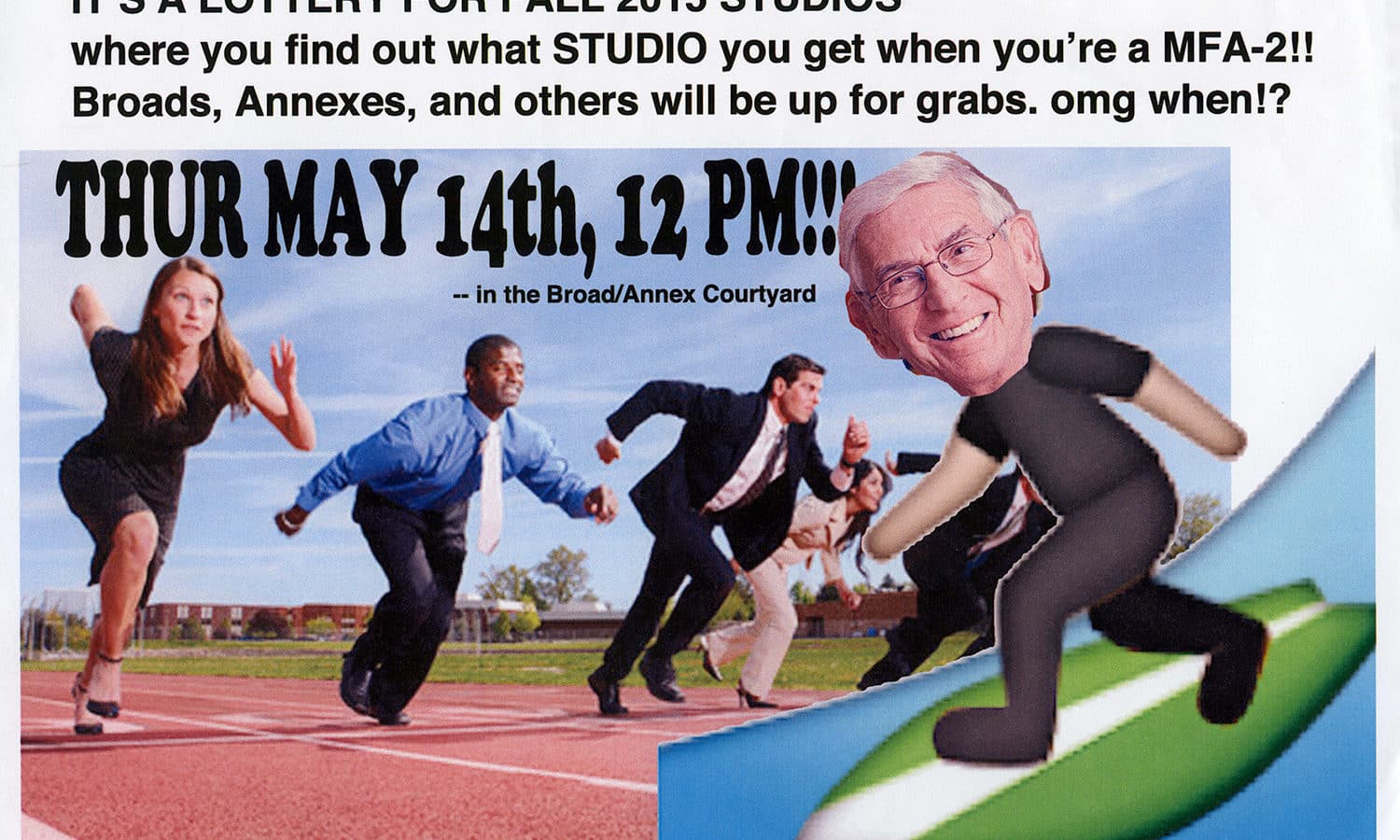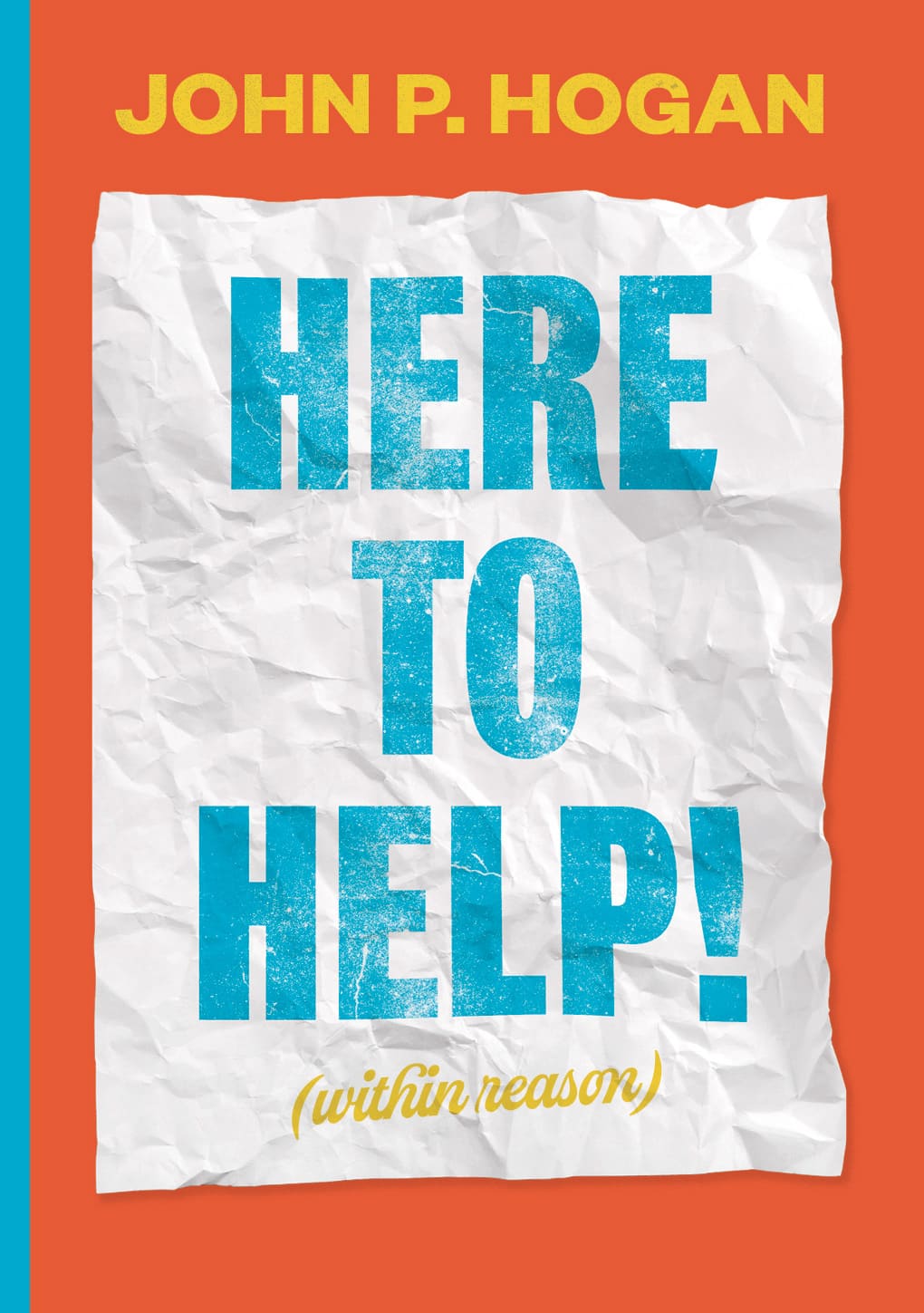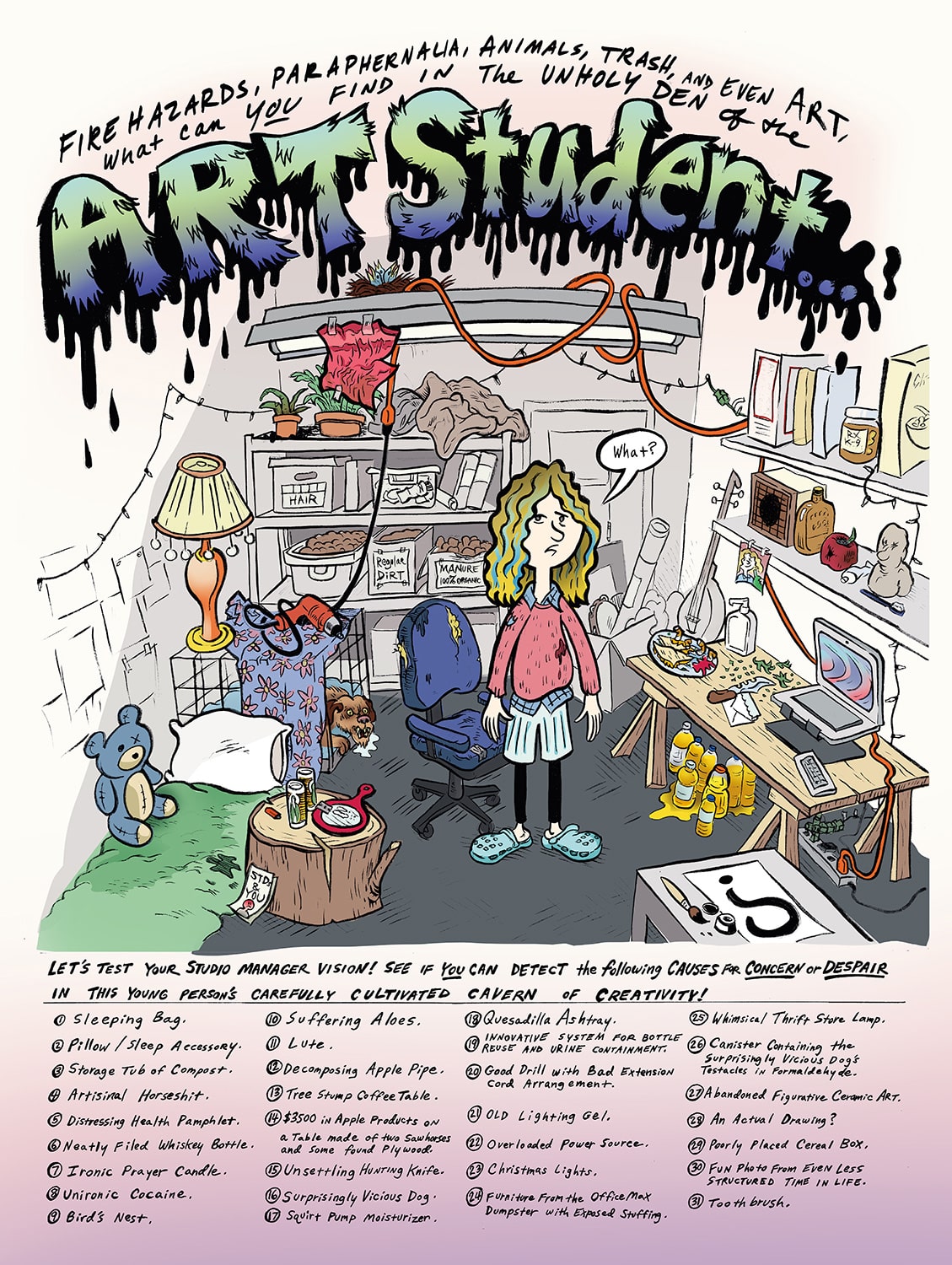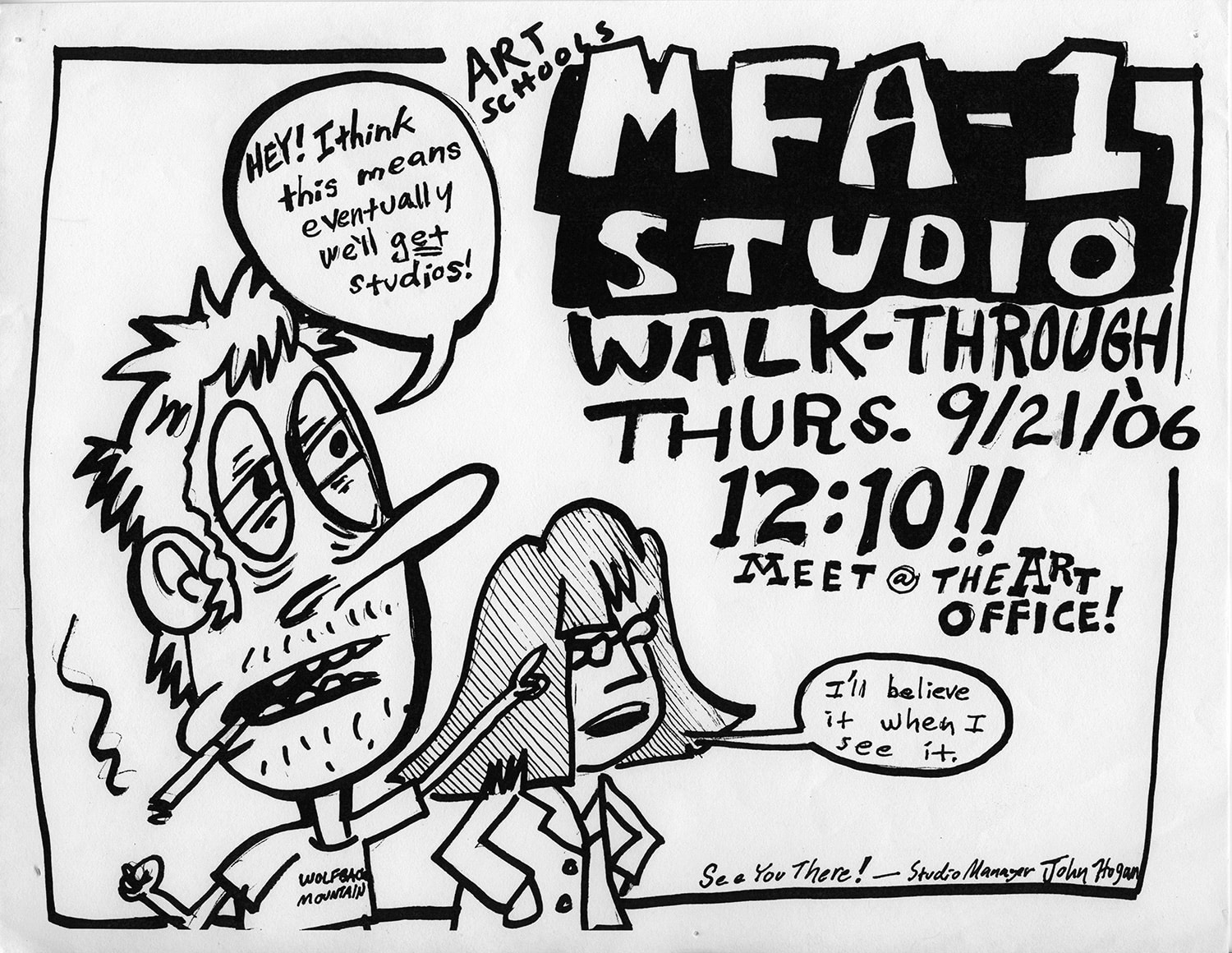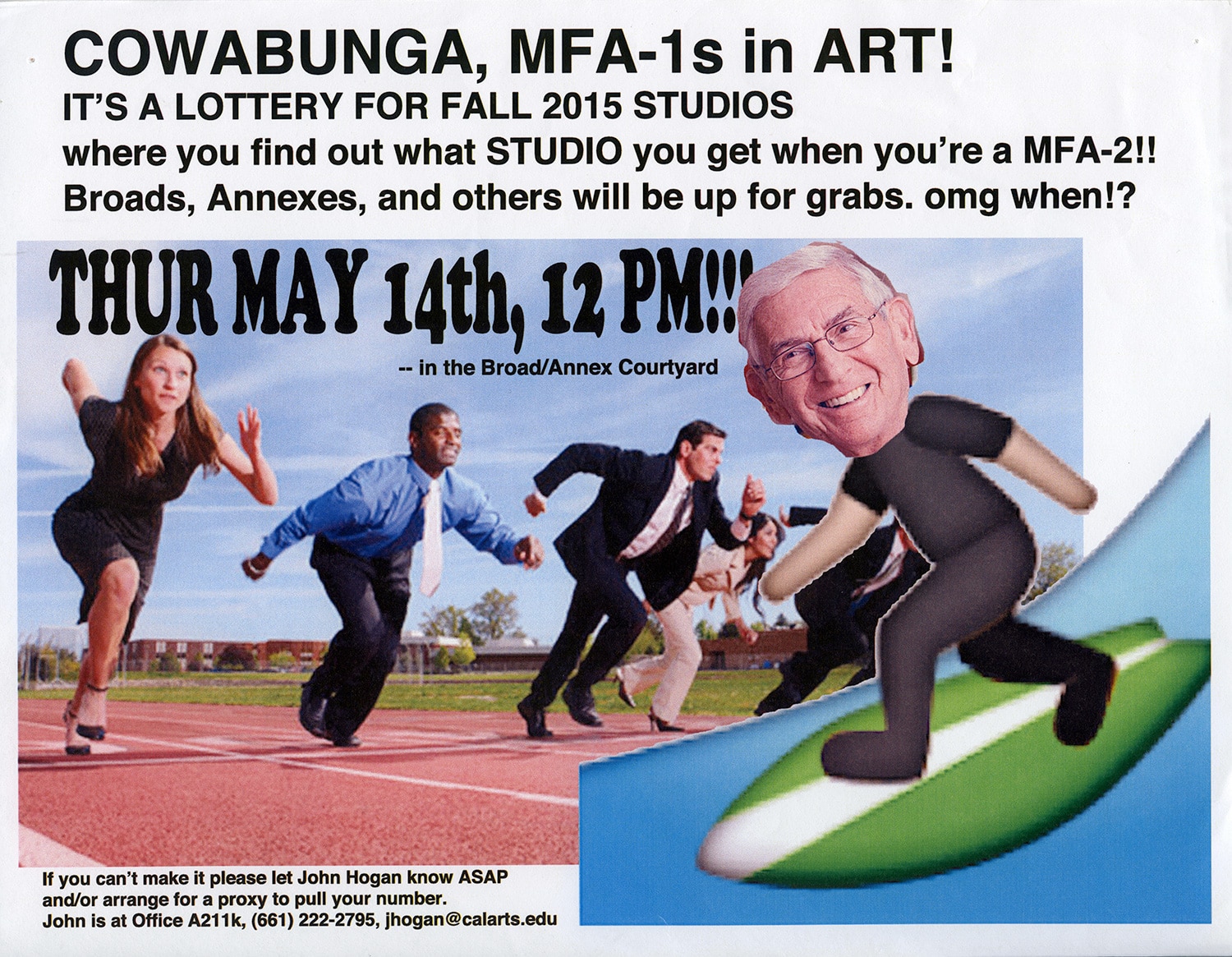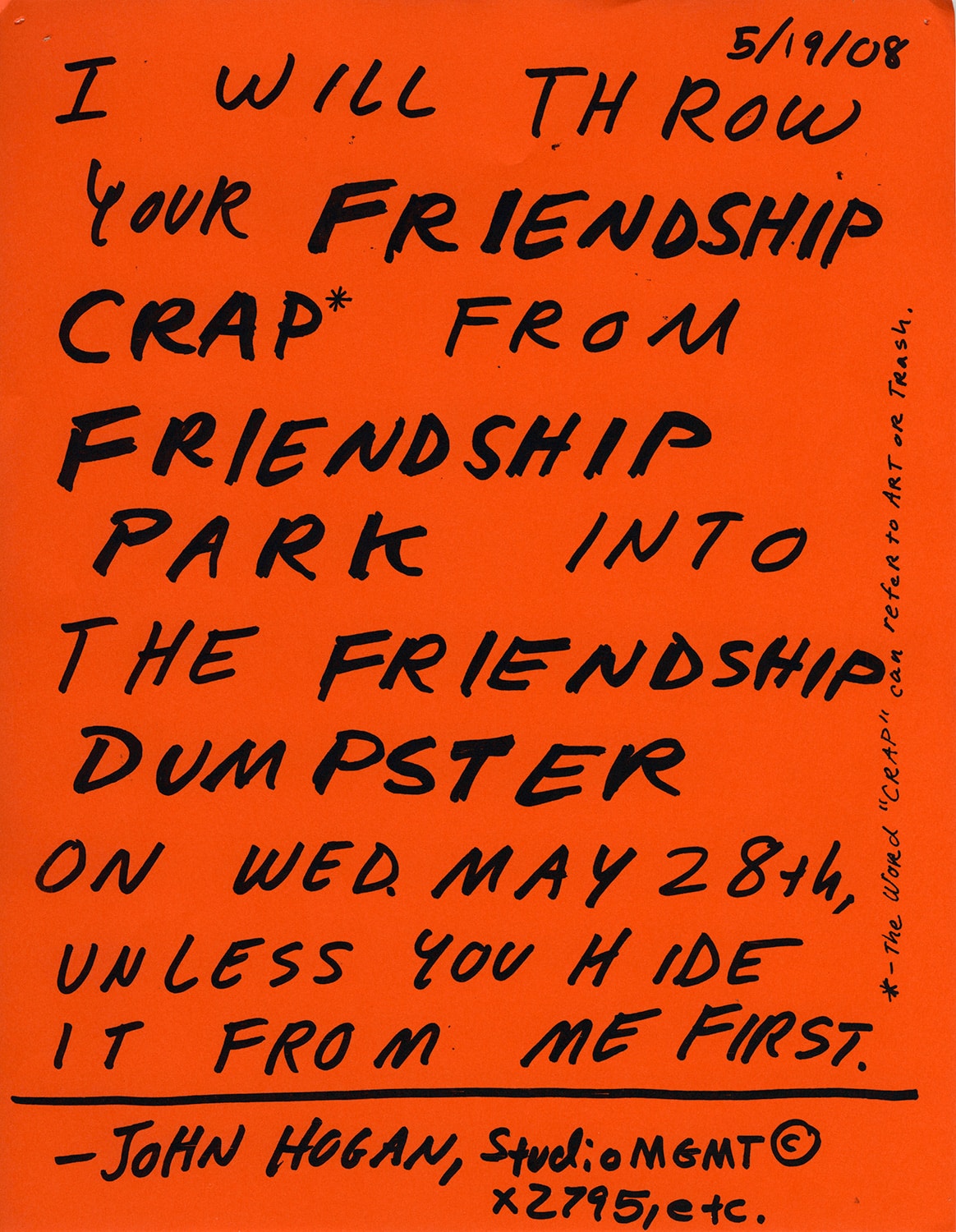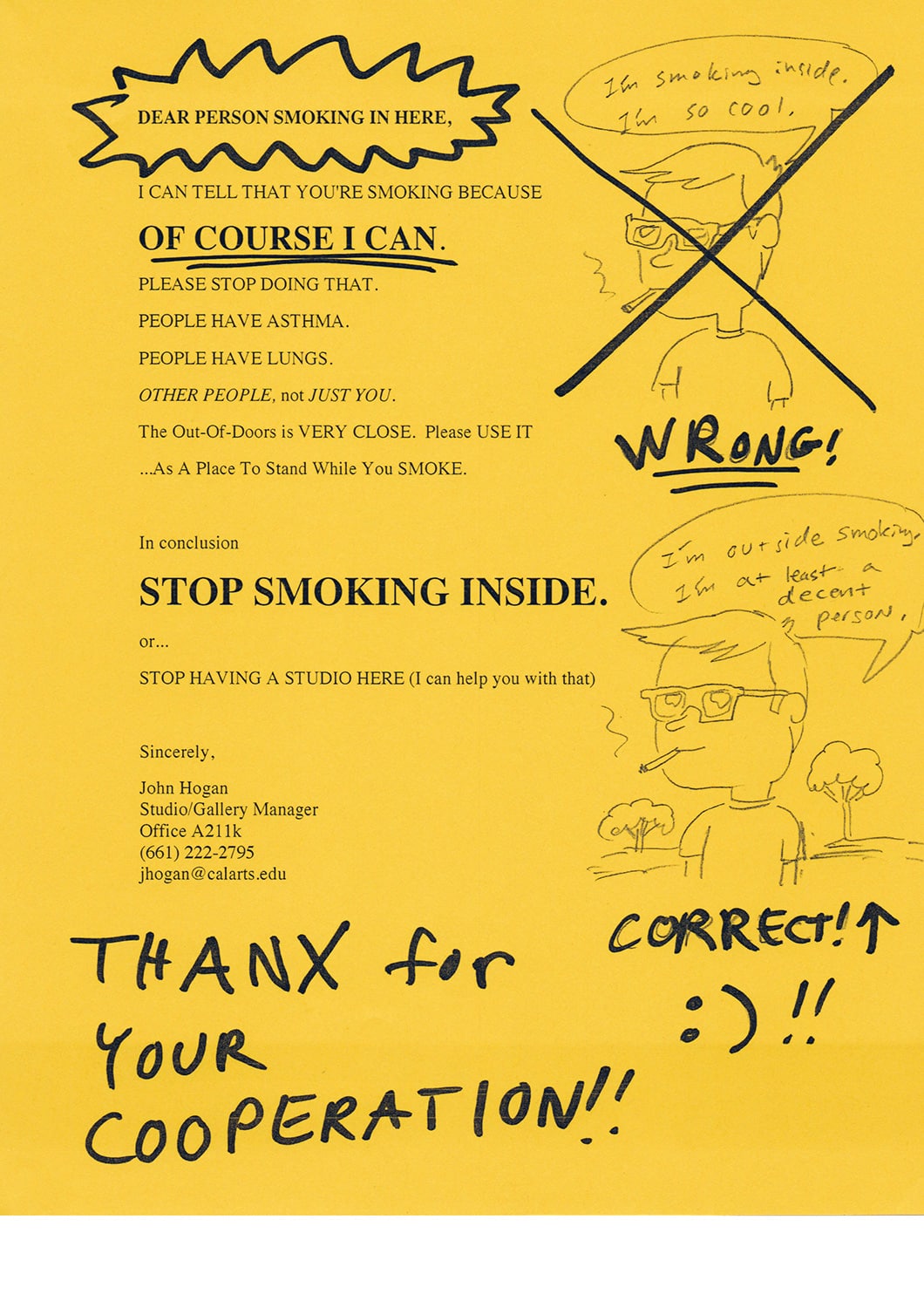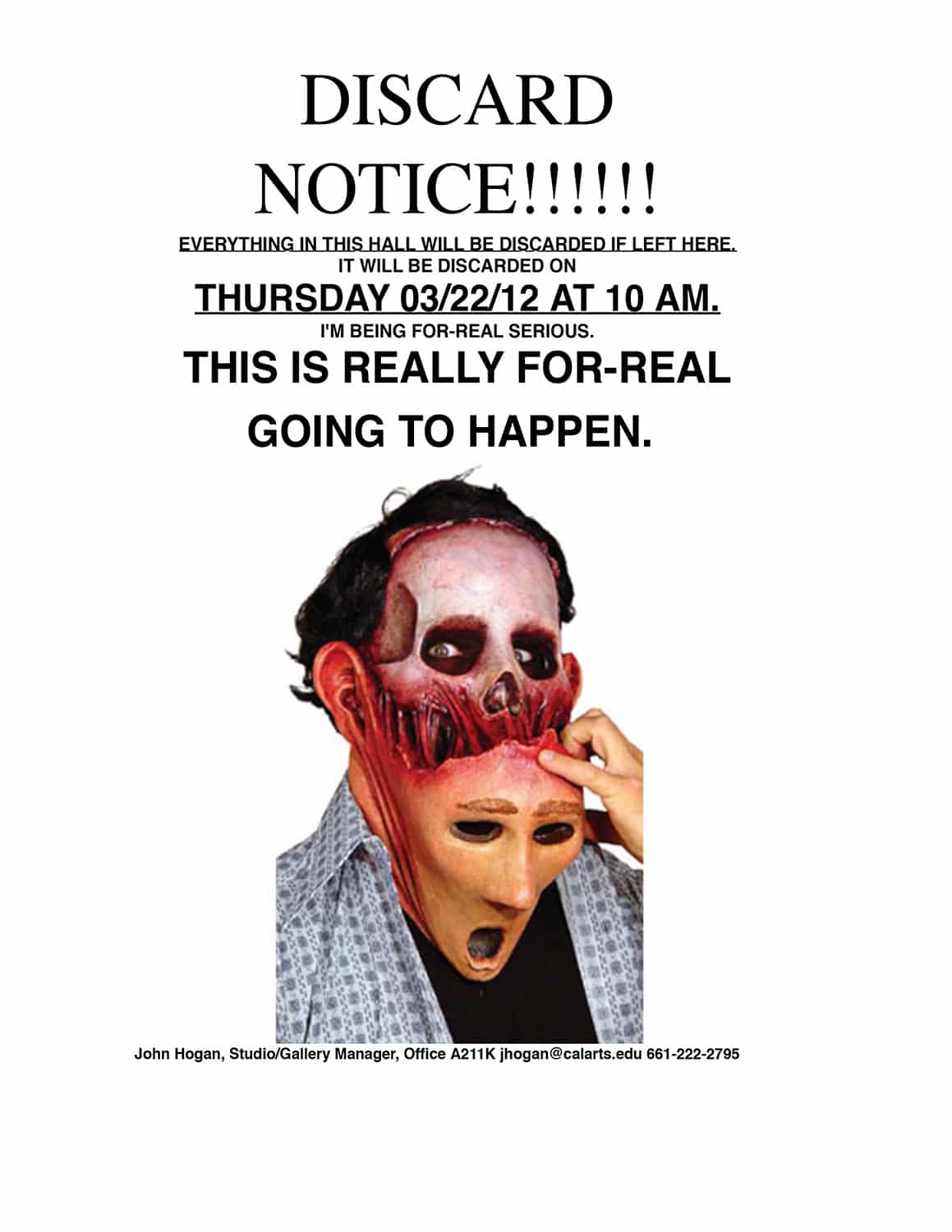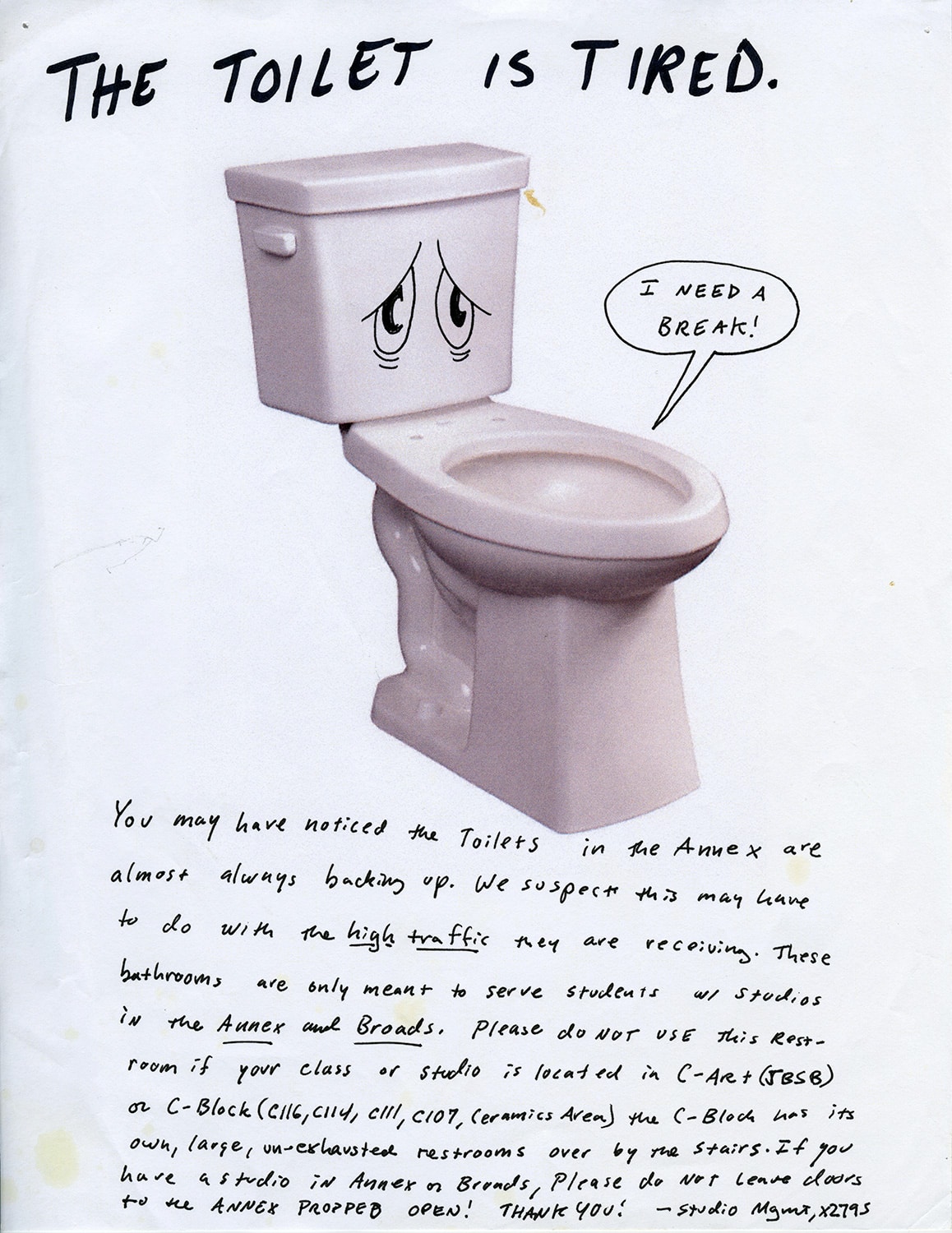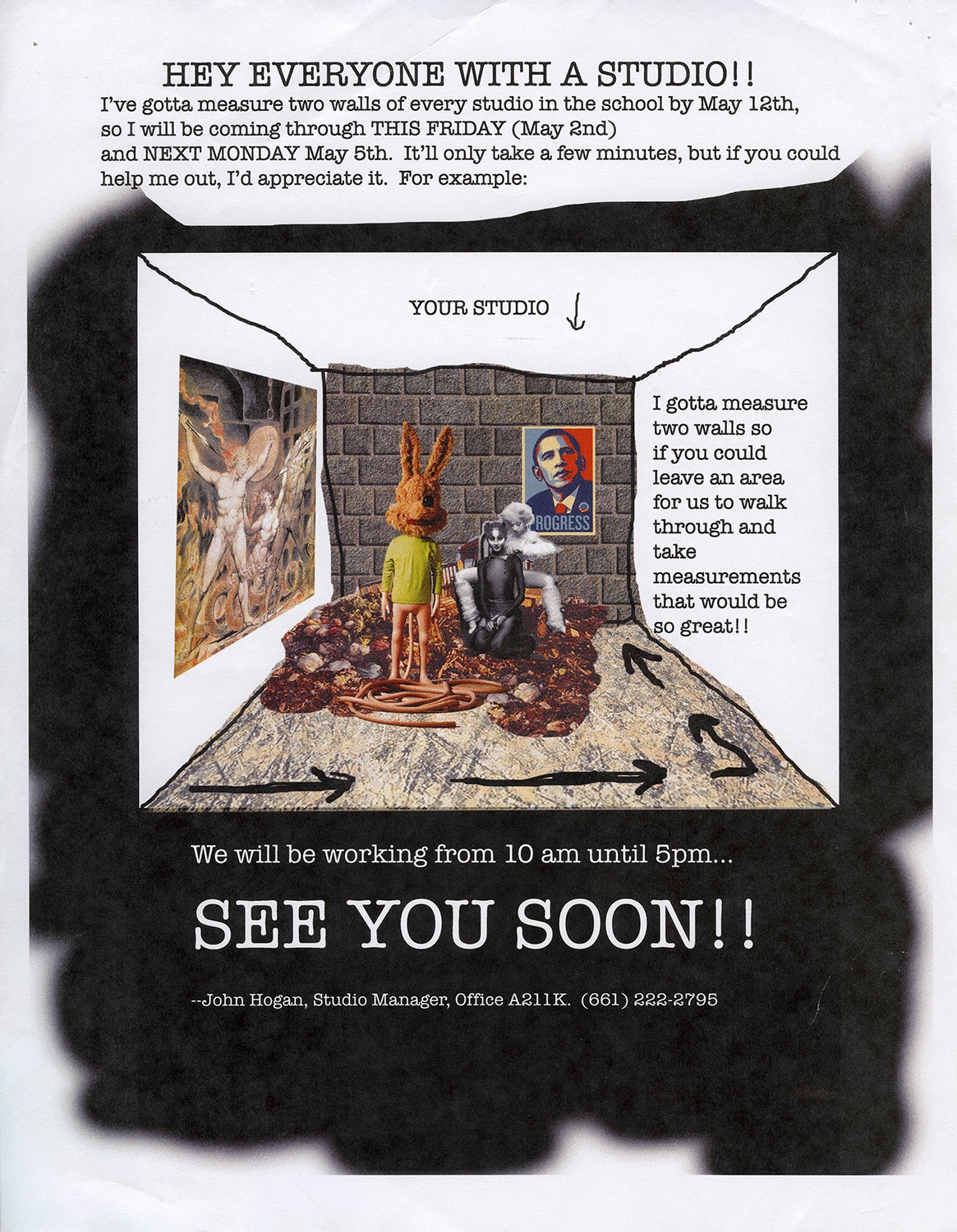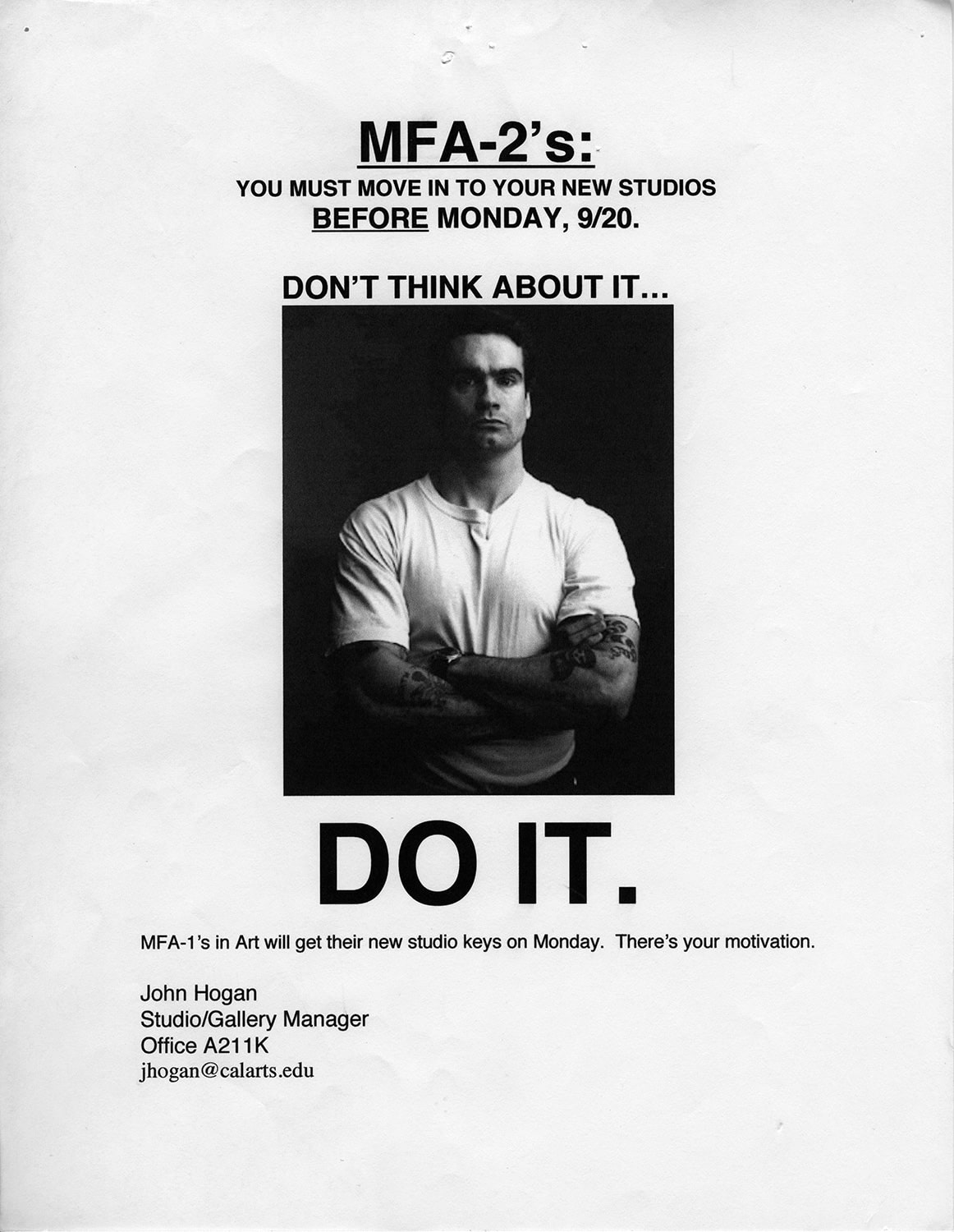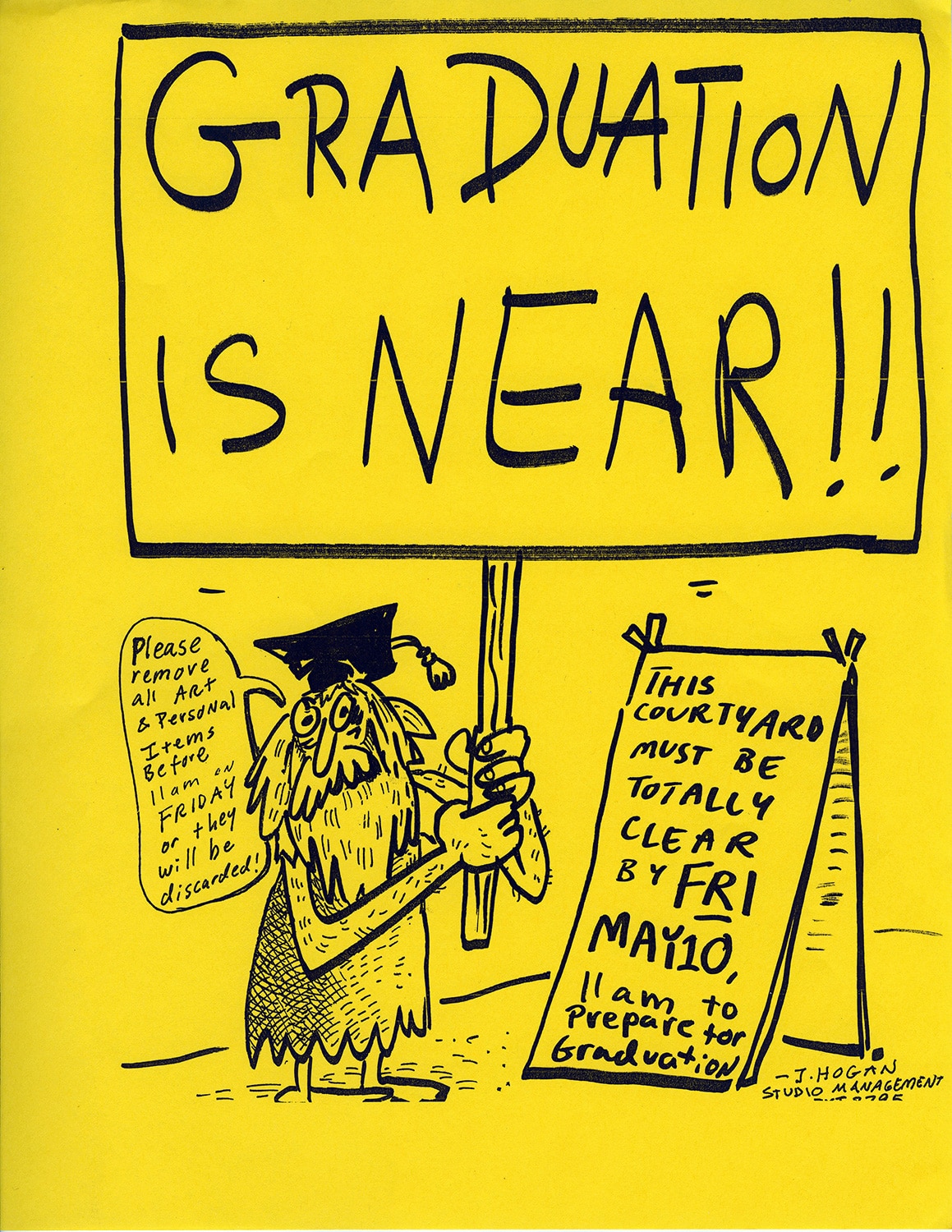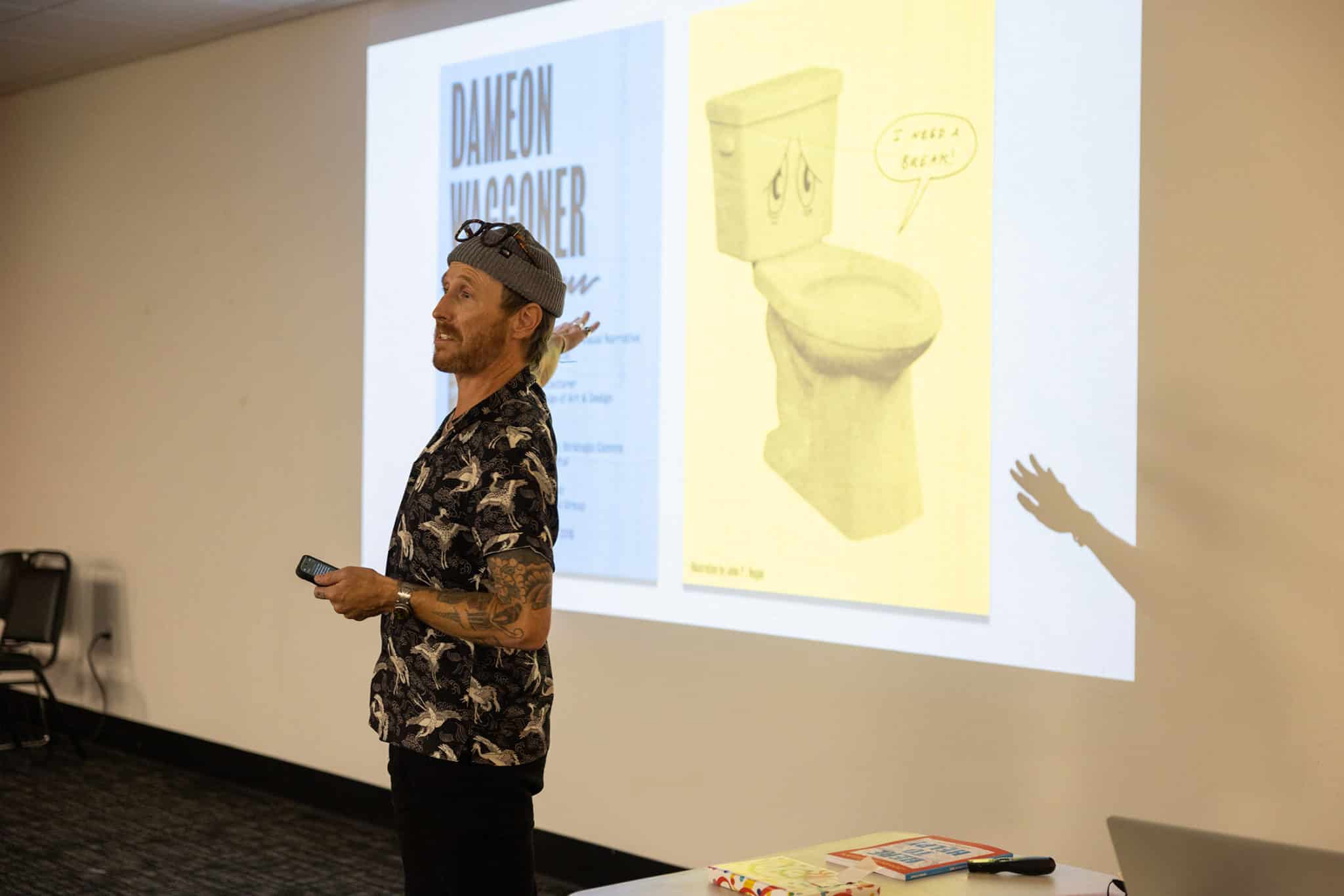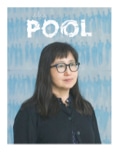
For CalArts students up to their ears in papers, projects, and a curriculum that seems finely calibrated to deprive them of sleep, stepping off the graduation stage and straight into a job may be the furthest thing from their minds. Such, however, was the reality for John P. Hogan, who earned an MFA from the School of Art in 2006 and entered the subsequent fall semester with a key to the studio and gallery manager’s office.
“I remember Tom Lawson, the then-dean, asking if I could handle it,” shared Hogan, “and I remember my reply weirdly just being, ‘I’m from New Jersey, I can do it!’”
Thus the newly minted MFA grad was thrust into a position of authority at CalArts—a place known for flipping the status quo on its head. In this role, Hogan manages the numerous gallery shows running concurrently at any given time during the semester, oversees the more than 200 studios across the main and exterior buildings, liaises with facilities management and students, and generally ensures that the latter “don’t hurt themselves or anybody else.”
A lot has changed in the 16 years Hogan has held his post, but capturing students’ attention is an unceasing challenge that has left higher education staff and faculty furrowing their brows for years. One of Hogan’s solutions is a holdover from a more analog era, but one that remains en vogue at the Institute: flyers.
Hogan’s tongue-in-cheek flyers—which include studio lottery announcements, cleanup notices, move-out leaflets, and not-so-gentle reminders to quit smoking indoors—are the subject of his latest book Here to Help! (within reason).
Click on the images below for caption information:
Here to Help! is a compilation of Hogan’s personal favorites, which have accumulated in a dedicated folder in his office file cabinet since assuming the role. Far from a catalog of nondescript notices pleading with students to clean their spaces, the flyers in the book are witty dispatches by a fellow artist who implicitly understands his audience and can play their game.
Keeping astride of students’ imaginative new ways of flouting the rules keeps the job fresh, but the flyers are one of the stable elements of Hogan’s position. They are even cathartic, as stated in his essay:
They served as a kind of therapy for me. A release valve for tension … I worked through the farcical nature of my position in public, to indicate to the students that I was aware enough to realize this was all absurd and they had no regard for it, but I would actually go through with it anyway. This mix of gallows humor and Authoritarian Lite came to define my herding approach for these feral cats we called art students.
The book’s creation is a CalArtian affair, featuring additional essays by Molly Jo Shea (Art MFA 19) and School of Art faculty Michael Ned Holte, and edited by fellow alum Mathew Timmons (Critical Studies MFA 05), founder of the book’s publisher Insert Blanc Press. The book’s cover and layout were designed by Dameon Waggoner (Art MFA 18), whom Hogan credits with coming up with the book’s idea in the first place and setting it in motion upon receiving an Alumnx Seed Grant.
Hogan also cites the Official California Institute of the Arts Residency, Adam Otto Lutz’s (Art BFA 20) curatorial thesis project, as the impetus for the book. Though the program was ultimately deemed “unofficial” by the Institute, Lutz invited Hogan to join the residency in the final week of the semester, during which he shared a selection of his flyers and delivered an artist talk titled the “Permanent Staff Lecture”—the skeleton of what would eventually become Here to Help!
“The whole book is sort of meant to be a parody of an artist’s monograph,” said Hogan. “So every single flyer is supposed to have some kind of import to it that requires further explanation. I just think it’s funny, because flyers are supposed to be self-explanatory and simple, so I like the idea of not only making long, ridiculous flyers, but also explaining them using my MFA and critical thinking skills to examine them as artworks.”
These reflections can be found in the “plate information” section at the back of the book, accompanying thumbnails of nearly every featured flyer. The blurbs take on a humorous yet borderline diaristic quality, capturing flashes of zeitgeist that have arisen throughout Hogan’s tenure.
“I didn’t really think of it as a timepiece when we made it, and now I’m like, yeah, this is like a time capsule,” he said of the book. “It’s a time capsule of marginal aspects of CalArts, but I also feel that it tells a different story than that of different art stars and important thinkers. It’s like the day-to-day life of the school in a way that I don’t know is represented in other places. It’s kind of fun and interesting on that level, especially if you’re a truehead of CalArts history.”
Few are perhaps better suited to tell this story than Hogan, who, in addition to being a CalArts alum and staff member, has also periodically served as faculty in the School of Art. His role as an educator, he reflected, provided a new perspective of the student artists with whom he shares a mock-adversarial relationship as studio manager.
“The students, they’re really smart,” said Hogan. “They all just come here and have the most critical minds, so that’s why I had to raise my game for everybody. That’s why the stuff in the book, if it’s funny or interesting—that’s why. The audience are brilliant people. Even when they are vandalizing it, it’s pretty funny and clever.”
